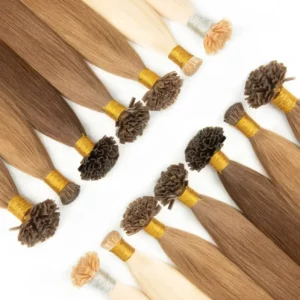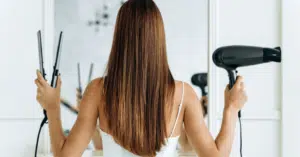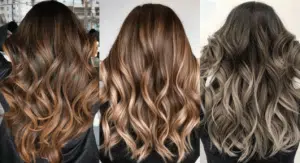If you’re a professional stylist or salon owner, recommending the right type of hair extension can make all the difference for your clients. Clip In and halo extensions are two of the most popular choices for adding length, volume, and fullness to natural hair, but each comes with its own set of pros and cons. In this guide, we’ll compare both types in detail, helping you determine which one suits your clients’ needs best.
Both Clip In and halo extensions provide an excellent way to enhance hair, but their installation methods, comfort, durability, and styling flexibility vary. The choice between the two largely depends on your client’s preferences, hair type, and how they plan to wear the extensions.
Wondering which type to recommend? Let’s break it down further and explore the pros and cons, pricing, and maintenance so you can make an informed decision for your clients!

The Battle of Clip In vs. Halo Extensions
While both Clip In and halo extensions offer volume and length, they cater to different needs and lifestyles. Here’s a deeper dive into what sets them apart.
Installation: How Easy Are They to Apply?
Clip In Extensions: Clip In extensions are typically sold in wefts or sections that need to be clipped into your client’s natural hair. The clips are attached close to the roots, and each piece is fastened individually. This requires a bit of time and attention to detail, but once in, they stay securely in place throughout the day.
Pro Tip: Clip Ins can be applied by the client themselves or with help from a stylist, making them a versatile choice. However, for first-time users or clients with thicker hair, some assistance may be needed to get a seamless result.
Halo Extensions: Halo extensions are much easier to apply. They consist of a single weft of hair attached to a thin, adjustable wire. The wire is placed around the crown of your head, and the extensions fall naturally over the wire, creating a seamless look. No clips, glue, or tape are required.
Pro Tip: Halo extensions are ideal for clients who need a quick and easy solution to add volume or length. They also require less time and effort for both the client and stylist.
When it comes to speed, halo extensions are quicker to install than Clip Ins due to their simpler application process.
Comfort: Which Is More Comfortable for Clients?
Clip In Extensions: While Clip Ins can be comfortable if applied correctly, they may feel heavy on the scalp, especially if your client is wearing multiple wefts for extra volume or length. The clips can pull on natural hair, which may cause discomfort or even damage over time if worn too frequently.
Pro Tip: If your client has sensitive scalp skin or suffers from tension headaches, Clip Ins may not be the best option for extended wear. It’s essential to ensure the clips are evenly spaced to avoid any discomfort.
Halo Extensions: Halo extensions are incredibly lightweight. The wire is adjustable, so it can be customized to fit each client’s head perfectly without causing strain or pulling. They are more comfortable to wear throughout the day and are less likely to cause tension on the scalp.
Pro Tip: If your client prioritizes comfort and needs extensions for longer durations, halo extensions are an excellent option due to their lightweight design.
Security: How Stable Are They During Wear?
Clip In Extensions:
Clip In extensions are known for their strong hold when applied correctly. Each weft is attached using multiple small clips that grip the natural hair securely at the root. This allows for stable wear throughout the day, even during light physical activities or long events.
Pro Tip:
For clients looking for a secure solution that stays in place for hours, Clip Ins offer excellent grip. Just ensure the wefts are installed close to the scalp and evenly spaced for optimal hold—especially for clients with thick or coarse hair.
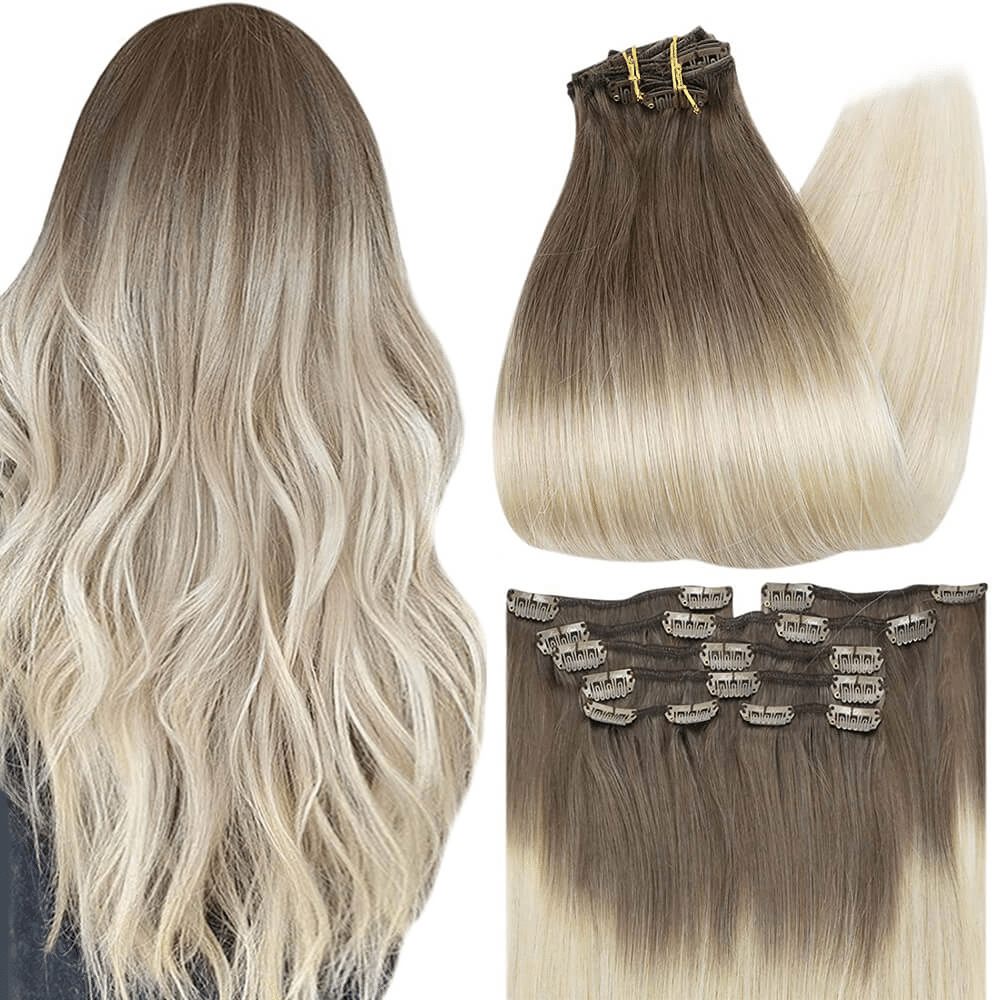
Halo Extensions:
Halo extensions, while comfortable and lightweight, rely on tension from the adjustable wire that sits around the crown of the head. While they sit snugly when properly fitted, they may shift slightly with excessive movement or if the wire isn’t adjusted correctly.
Pro Tip:
Halo extensions are best suited for clients seeking convenience and occasional wear rather than high-impact durability. If your client plans to wear them for extended hours or during movement-heavy activities, occasional adjustment may be needed to maintain the look.

Bottom Line:
If maximum hold is the priority—especially for events, photo shoots, or active days—Clip In extensions provide better security. For everyday casual use with comfort and ease, Halo extensions deliver a more effortless experience.
Styling Flexibility: Which Offers More Versatility?
Clip In Extensions: Clip Ins provide greater versatility in styling. Since they are attached directly to your client’s natural hair, they can be styled in various ways, including braids, curls, or even updos. They can also be combined with other types of extensions for even more volume or texture.
Pro Tip: Clip Ins can be a great choice for clients who want to experiment with different looks. They allow for maximum flexibility when it comes to changing hairstyles throughout the day.
Halo Extensions: Halo extensions, though still versatile, may not offer the same degree of styling freedom as Clip Ins. The wire-based installation limits how you can adjust the extensions, especially when it comes to updos or intricate braiding.
Pro Tip: For clients who prefer a simple, natural look, halo extensions can still be styled with loose waves or straight hair, but complex styles may require additional Clip Ins or other extensions.
Price: Which One Fits Your Budget?
The pricing for Clip In and halo extensions is generally similar at the same hair quality level. However, halo extensions might be slightly more affordable due to their simpler construction, as they typically consist of fewer pieces compared to Clip Ins, which require multiple wefts for full volume.
Pro Tip: Consider the client’s budget when recommending an extension type. Halo extensions can offer good value for clients looking for a simple, cost-effective solution, while Clip Ins may be more suited for clients seeking a more customizable, high-volume look.
Durability: How Long Will They Last?
Both Clip In and halo extensions can last a long time with proper care, though their durability largely depends on the quality of the hair and maintenance.
Clip In Extensions:When made with high-quality, full-cuticle hair, Clip Ins can last 1-2 years with proper care. Remy hair Clip Ins generally last around 4-6 months.
Pro Tip: Advise your clients to handle Clip Ins gently and store them properly to prolong their lifespan.
Halo Extensions: Halo extensions, when made with premium materials, can last just as long as Clip Ins if maintained well. The quality of the wire and the extensions themselves will impact their longevity.
Pro Tip: Regularly check the wire’s tension and replace the extensions if necessary to ensure a secure fit and long-term durability.

How to Choose Between Clip In and Halo Extensions
Ultimately, the decision comes down to what your client is looking for. Here’s a quick guide to help:
Go for Clip In Extensions if your client wants:
More volume and length options
Versatility in styling
A more secure, longer-lasting extension

Go for Halo Extensions if your client wants:
A quick, easy installation with minimal effort
Comfort and lightweight wear
A more budget-friendly option for occasional use
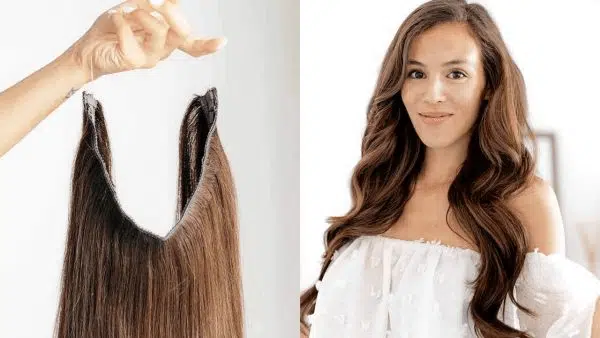
Frequently Asked Questions (FAQ)
1. How long do Clip In extensions last? Clip In extensions can last for 6 months to a year with proper care, depending on the quality of the hair and how frequently they are used.
2. Can I wear halo extensions daily? Yes, halo extensions are comfortable and lightweight, making them a great choice for daily wear. Just be sure to adjust the wire regularly to ensure a secure fit.
3. Are halo extensions suitable for fine or thin hair? Halo extensions can work for fine or thin hair, but they may not blend as seamlessly as Clip Ins, especially if the hair is very fine. It’s important to ensure the wire is well-concealed.
4. Can I style halo extensions? Yes, halo extensions can be styled, but they may not offer as much flexibility as Clip Ins. They are ideal for loose waves or straight styles, but more complex hairstyles may require additional extensions.
5. Can I dye Clip In or halo extensions? Both types of extensions can be dyed, but it’s important to use human hair extensions for dyeing. Always consult the manufacturer’s guidelines to avoid damaging the hair.
6. How do I store Clip In and halo extensions? For Clip Ins, store them in a cool, dry place in their original packaging to prevent tangling and breakage. For halo extensions, store them carefully to avoid damage to the wire or weft.
CLIP IN HAIR
Conclusion
Clip In and halo extensions each offer distinct advantages depending on your client’s needs. Whether your clients are looking for flexibility, comfort, or ease of use, both options can help you create beautiful, voluminous hair in no time. Consider the factors that matter most to your clients—comfort, style, price, and longevity—and make the recommendation that best suits their lifestyle!


